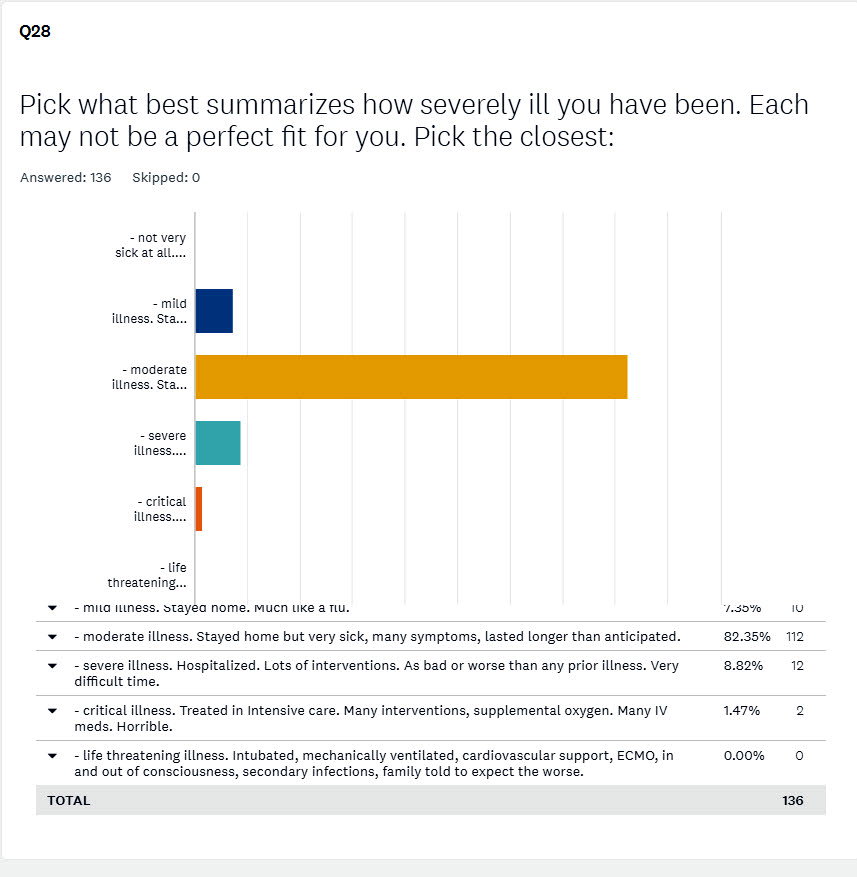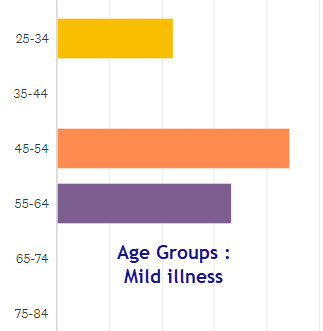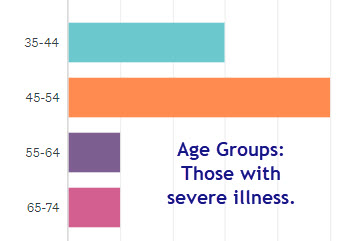Q. 28 - Severity of illness
LTCOVID.com
Thanks for visiting!
To translate this page, select your
language from the dropdown menu below:
Severity of illness was autoassessed based on the suggested responses.
The strong majority response was "a moderate illness. Stayed home but very sick, many symptoms, lasted longer than anticipated."
Published data for the severity of illness for COVID-19, typically underscore the importance of age on outcome.
One can see that tendancy below in this sample of responents as well.
Recall that the mean age of the total sample is 48.27±10.90 yrs.
We saw before that this age distribution when compared with standards was rather leptokurtic. This term means that values to either side of the mean, stay close to the average value.
Just to share ...
The opposite is a distribution that is platykurtic (flat instead of a spike).
So if less severe, and more severe and critical COVID-19 illnesses, occur at outliers of age, they may be missing from our sample.
One respondent in the 45-54 age group and 1 in the 55-64 age group indicated having had a critical illness as defined in the question response choice shown above.
These are in the final analysis, subjective impressions of severity of illness.
That does not imply a doubt about their validity or truth.
Quantitative methods, such as the Acute Physiology and Chronic Health Evaluation (APACHE II) method as developed in those critically ill (as developed by Bill Knaus and others at GWUMC 40 years ago) would be of use. But no such objective and validated method exists for use in this setting of viral illness of long duration. At least not yet.
Responses to the questions that follow, will nevertheless provide links to severity of illness through analysis of symptoms, and organ systems involved. First for the sample as a whole, then for subgroups.
A découvrir aussi
- Q. 45, 46, 47, 48, 49 - Sources of effective emotional support
- Q. 51 - Response of employers to respondent's illness
- Q. 60 - Thank you and possible feedback



